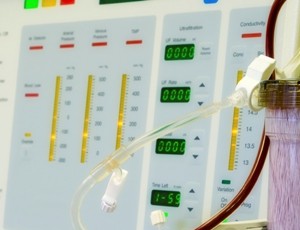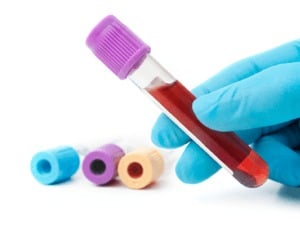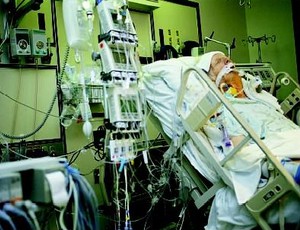Predictive model of PICC associated thrombosis in cancer patients – Full Text

“To analyze the incidence of PICC associated venous thrombosis. To predict the risk factors of thrombosis. To validate the best predictive model in predicting PICC associated thrombosis” Song et al (2020).
Guidelines for the management of IV antibiotics used in OPAT services

“Based on available information sources, the present work provides prescribers and healthcare professionals with key data for the proper preparation and best administration modalities of intravenous antibiotics” Diamantis et al (2020).
Compatibility of Y-site administration of Recarbrio with a wide range of antimicrobials – Full Text

“The objective of the study is to investigate the compatibility of Y-site administration of imipenem/cilastatin/relebactam with a wide range of antimicrobials” Ghazi et al (2020).
Treatment strategy for extravasation of [177Lu]Lu-DOTATOC

“The treatment of extravasation was successful, and the redistribution of the drug can be easily verified through measurement of the dose rate at contact with the skin” Arveschoug et al (2020).
Using intracavitary ECG for tip location during central venous catheterization

“Using the catheter as a traveling intracavitary electrode, intracavitary electrocardiography is based on the increase in the detected amplitude of the P wave while approaching the cavoatrial junction” Pittiruti et al (2020).
Role of implantable ports in the management of pediatric patients – Full Text

“Open and percutaneous port-a-cath insertions are safe in children with chronic diseases. Port-a-cath improved patients’ management, and complications are infrequent” Bawazir and Banoon (2020).
How to predict central venous catheter insertion depth during insertion

“Central venous catheters in adult patients can be placed near the cavoatrial junction using a simple formula” Mo et al (2020).
Treatment of extravasation of therapeutic radiopharmaceutical injection

“However, the occurrence of extravasation of therapeutic radiopharmaceutical was rarely reported” Tang et al (2020).
Infant PICC placement without general anesthesia

“Infants younger than 6 months and under 5.5 kg can be managed without general anesthesia for peripherally inserted central catheterinsertion using a Fast, Feed and Wrap technique” Laing et al (2020).
Right internal jugular central venous catheter length in pediatric patients – Full Text

“In pediatric cardiac surgery, selection of the optimal size and position of a percutaneously placed central venous catheter (CVC) is critically important” Stone et al (2020).
Biosafety of non-return valves for infusion systems in radiology – Full Text

“Cross-infection in contrast injectors is still a subject under discussion with little understanding. This study evaluated the biosafety of non-return valves (NRVs)” Azevedo et al (2020).
Y-site physical compatibility of hydrocortisone continuous infusions with admixtures

“The purpose of this study was to examine the physical compatibility of hydrocortisone infusions and select intravenous medications through a simulated Y-site” Foushee et al (2020).
Review of vascular access devices for hemodialysis cannulation – Full Text

“Hemodialysis cannulation is often done with a notoriously harmful device that also exposes operators to a high risk of accidental puncture” Nardinocchi et al (2020).
Central venous cannulation in minimally invasive aortic valve surgery

“Here we describe a technique for central venous cannulation during minimally invasive aortic surgery” Kaleda et al (2020).
Analytical equivalence of intraosseous and peripheral blood samples

“While IO devices are effective for infusion of blood, fluids, and medications, there is limited data on the analytical equivalence of specimens taken out of IO devices and peripheral venous blood” Song et al (2020).
Analgesic block for implantable port insertion – Full Text

“In CVPC placement, ultrasound-guided Pecs II block is a more reliable, easily applicable and longer-acting approach than LA infiltration for postoperative analgesia” Ince et al (2020).
Ultrasound-guided tunneled femoral lines in critically ill pediatric patients

“We describe our institutional technique for ultrasound-guided tunneled femoral venous access in neonates and infants” Woerner et al (2020).
Case study describes bowel perforation during femoral central catheter insertion

“We present a rare complication of bowel puncture during insertion of a femoral CVC in the emergency department in a 46-year-old female” Beca and Loubani (2020).
Clinical impact of sodium and water administration following IV drug administration
“The quantitative importance of prescribed intravenous (IV) medication to water and sodium intake in routine clinical practice is undocumented, with uncertain influence on clinical outcomes. The present study aimed to redress this issue in surgical patients with gastrointestinal problems” Austin et al (2020).
Central venous catheter variation and related complication rates

“The aim of this prospective, cohort, 7-year study was to compare the incidence rate differences of catheter-related complications (CRCs) among 4 types of central VADs in cancer patients on home parenteral nutrition” Cotogni et al (2020).
Management of superior vena cava syndrome – Full Text

“The number of cases of superior vena cava syndrome (SVCS) increased due to increased cardiac devices and central venous catheters” Abuelatta et al (2020).
OPAT associated adverse outcomes – Full Text

“A risk score can be implemented to detect who may be at high risk of serious adverse outcomes, but all patients on OPAT may require monitoring to prevent or detect adverse events” Keller et al (2020).
Impact of IV push antibiotic administration on therapy delays in sepsis

“This study evaluates the difference in time from sepsis diagnosis to first-dose completion of β-lactam antibiotics between IV push and IV piggyback administration” Gregorowicz et al (2020).
Effectiveness of double checking to reduce medication administration errors – Full Text

“Double checking medication administration in hospitals is often standard practice, particularly for high-risk drugs, yet its effectiveness in reducing medication administration errors (MAEs) and improving patient outcomes remains unclear. We conducted a systematic review of studies evaluating evidence of the effectiveness of double checking to reduce MAEs” Koyama et al (2020).
Totally implantable venous access ports for patients with breast cancer – Full Text

“In conclusion, TIVAP implantation via IJV or subclavian puncture by blind puncture approach is safe and feasible for the breast cancer patients during adjuvant treatment” Zhang et al (2020).
Intraoperative identification of persistent left superior vena cava with intracavitary ECG

“The persistent left superior vena cavae were identified with the aid of intracavitary electrocardiogram” Jheengut and Fan (2020).
Central venous catheter outcomes in cancer patients

“The analysis compares midterm peripherally inserted central venous catheters (PICCs) with long-term centrally inserted catheters, including totally implanted ports and tunneled catheters with central insertion (tCVCs)” Corti et al (2020).
Triaging patients who require vascular access creation in COVID-19 – Full Text

“We propose the ABCDE score, a simple five-component scoring system that will allow clinicians to triage patients who require vascular access creation” Ng et al (2020).
Safety of a rapid Daratumumab infusion protocol

“Our findings indicate that rapid daratumumab infusion is safe and tolerable and provides cost savings for patients with relapsed/refractory disease” Hamadeh et al (2020).
What is the impact of catheter securement on CLABSI rates – Full Text

“The use of a subcutaneous engineered securement device (SESD) for peripherally inserted central catheters (PICC) in an acute care setting was found to have a direct impact on central line associated bloodstream infection (CLABSI) rates compared to traditional adhesive engineered securement devices (AESD)” Rowe et al (2020).

